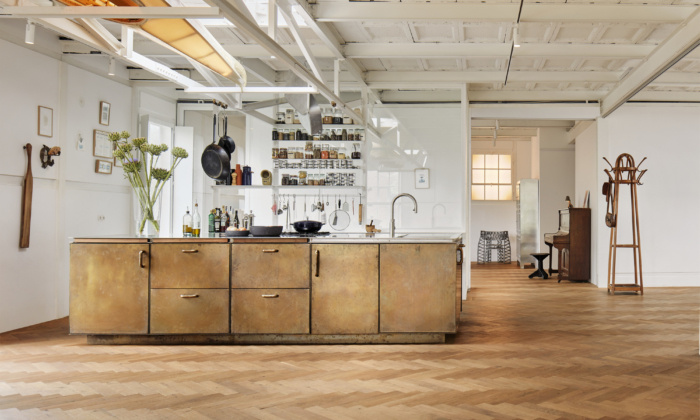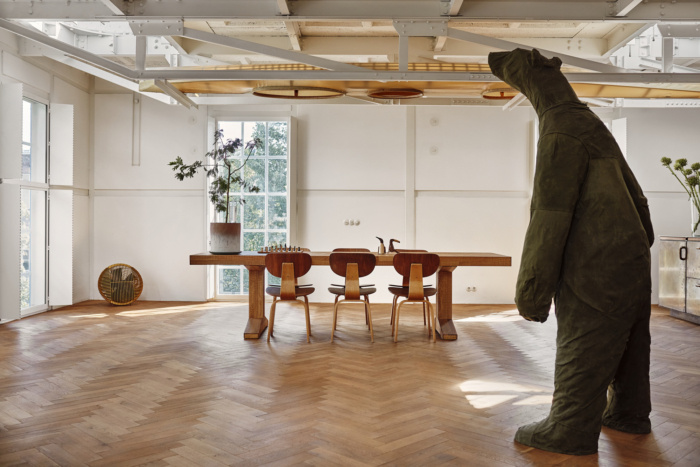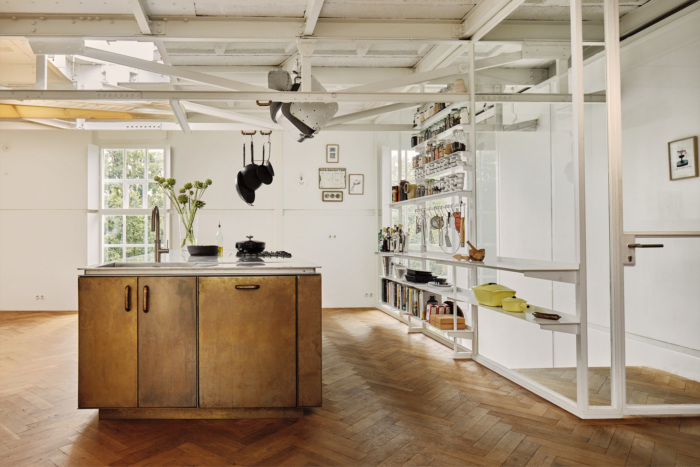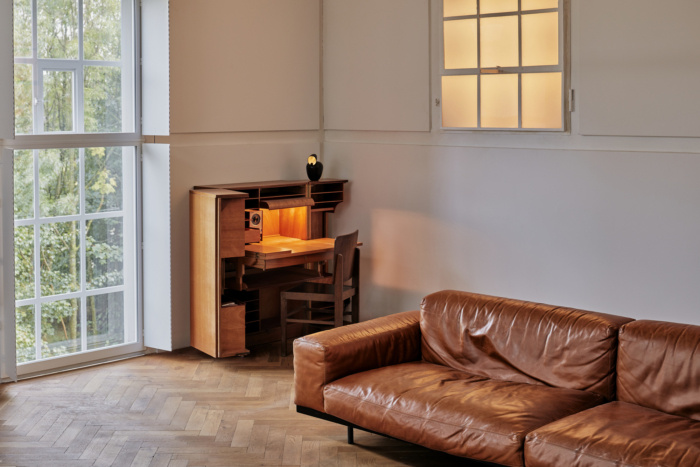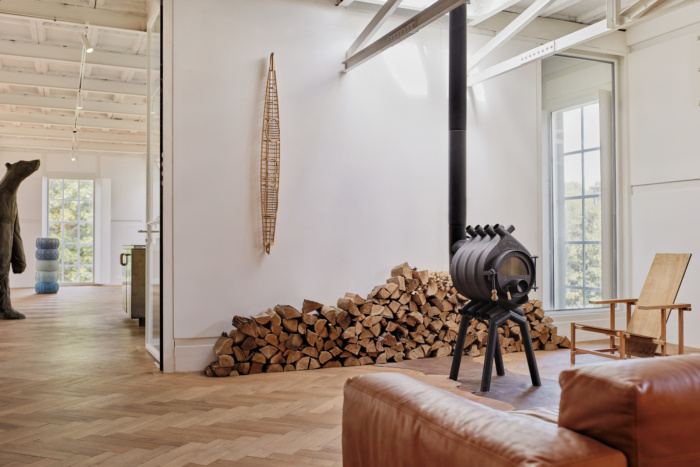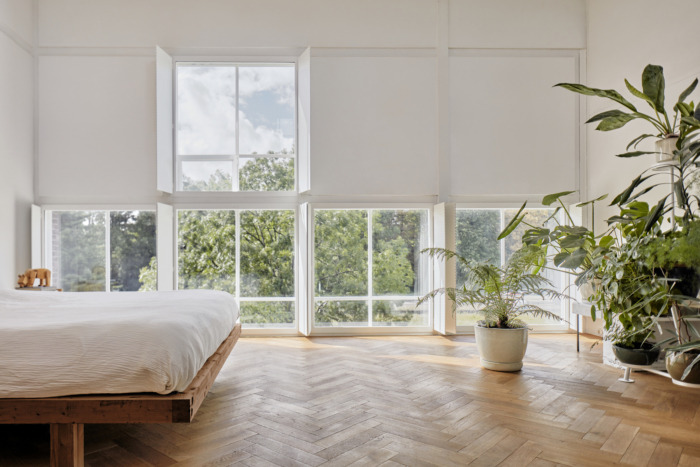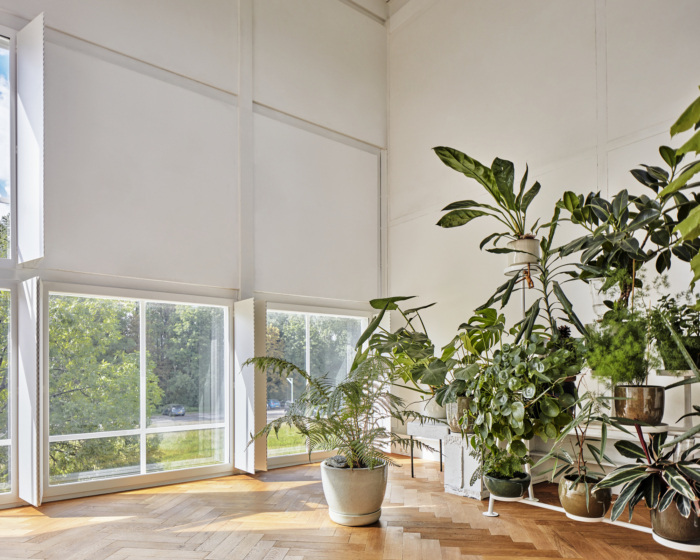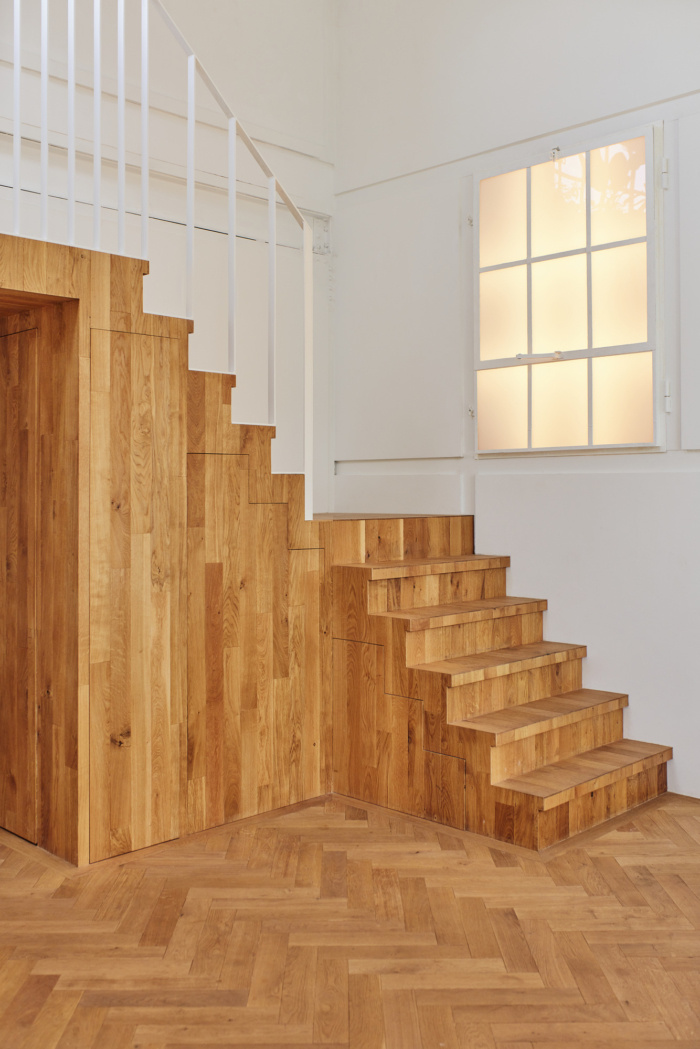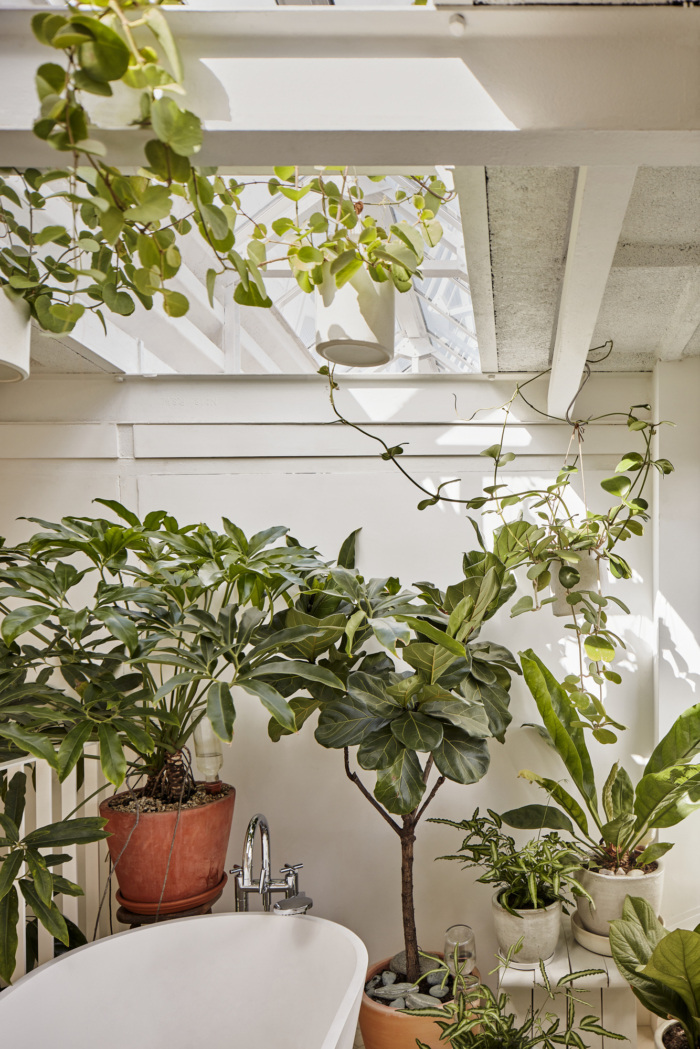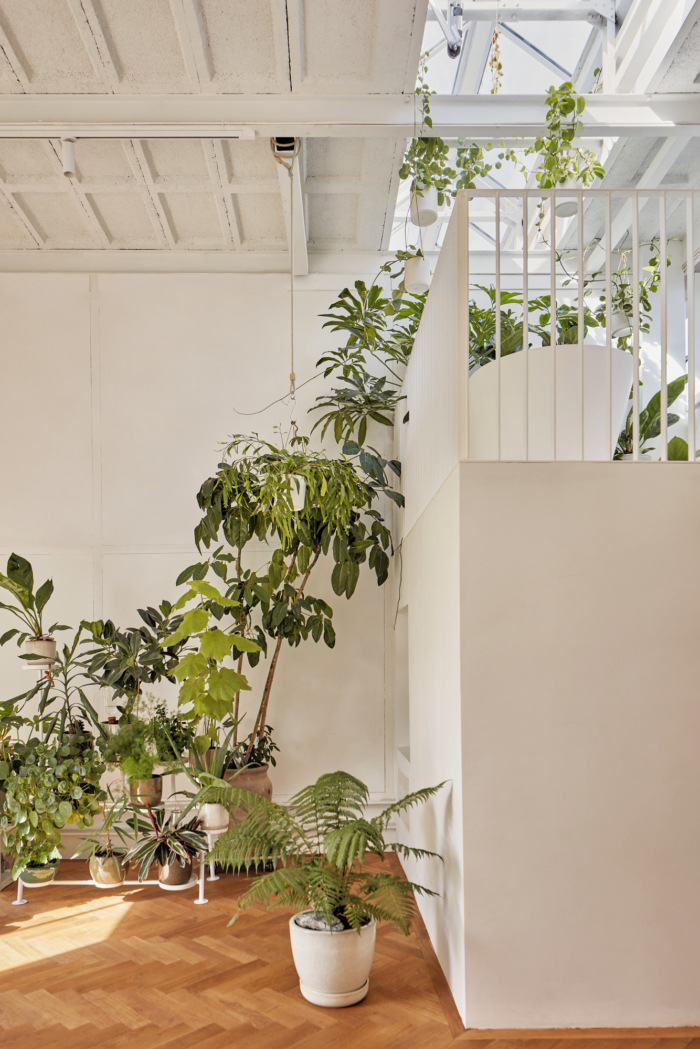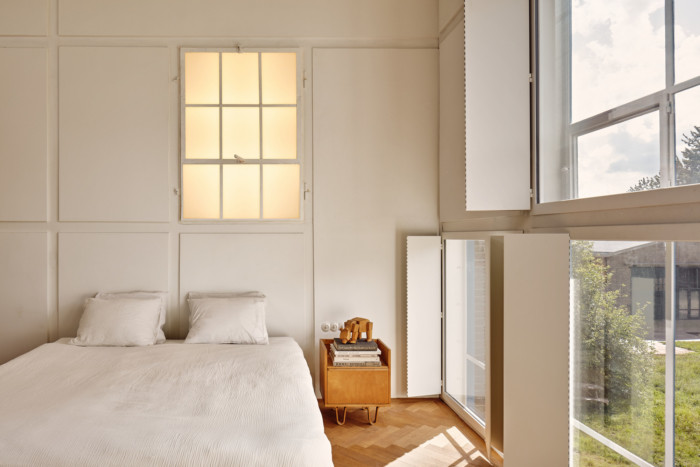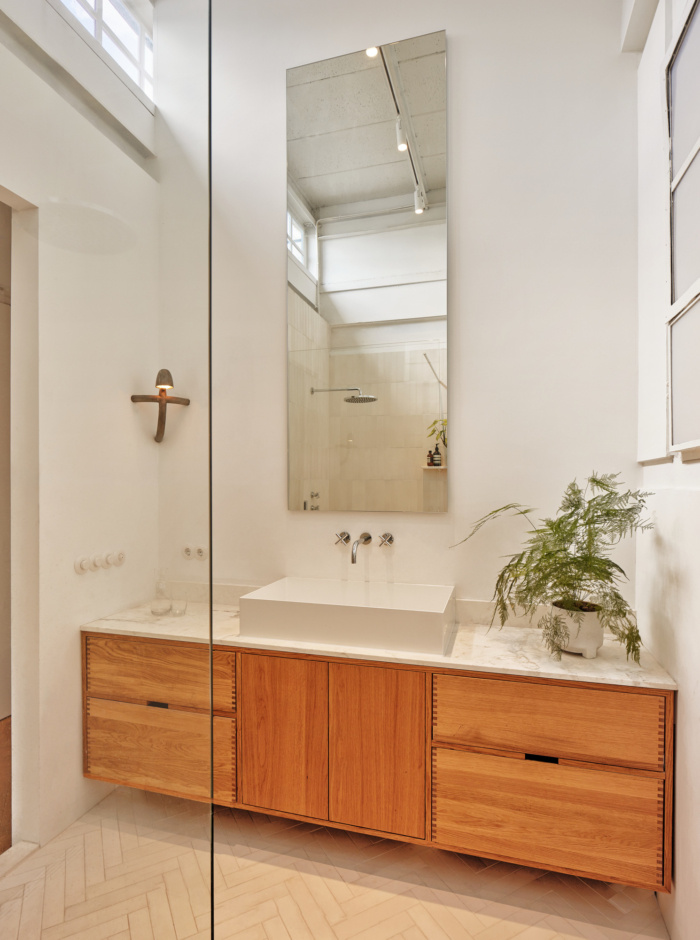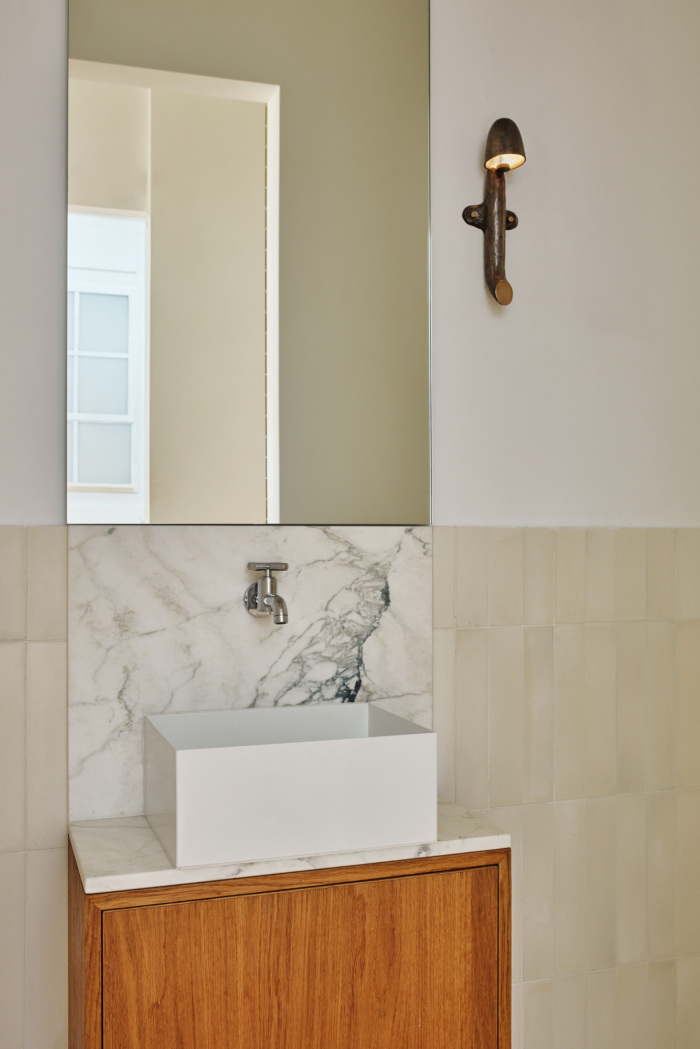Ketelhuis Residence
Studio Modijefsky designed Ketelhuis to complement the original structure and to enhance the use of each room to suit the needs of an artist couple in Zaandam.
On the Hembrug terrain in Zaandam, an area of 42,5 hectares, a monumental industrial site has been transformed by Studio Modijefsky into the home and studio of an artist couple.
The substantial volume of this building full of potential has been wisely divided into two levels, therefore allowing to accommodate different functions: an office and a workshop on the ground floor, a gallery space and a home on the first floor. The two floors are connected by two sculptural staircases, one of which leads to the home through the kitchen, the other one brings visitors from the workshop to the gallery space.
The ground level has been designed so that all the functions in the workshop are implemented. This floor can operate by itself serving all the needs for the daily production and activities.
As you go up the main staircase and cross the threshold, Ketelhuis (translated as ‘boiler house’) comes across as open to visitors. Immediately as you enter, the interior appears sober and welcoming, being it defined by three main finishes: white painted materials, oak wood, and brass. The completely white walls subtly reveal the structural grid, enhanced through a play of reliefs which become traces of the function, a celebration of the building.
Standing in front of you, closer to the entrance accessible through the second staircase, a big gallery space has been minimally designed to accommodate different kinds of moments and events, leaving space for imagination. White industrial beams overlook the haring bone wooden floor, two simple elements in harmonic balance with each other. Three holes in the ceiling, previously accommodating as many chimneys, are now replaced with glass portholes, turning the openings into skylights.
During shows and presentations, this grand gallery space is served by the totally customized and unconventional open kitchen which is part of the house. A central piece, the island, has been carefully designed and crafted entirely in brass, completely filled with cabinets on each of the four sides, and covered by a beautiful stainless-steel top. Two ‘specials’ complement the elegant design: custom made bronze handles and pull-out wooden shelves. The back of the kitchen is a system of open white shelves leaning on the transparent glass box of the main entrance. A big oak table and a set of vintage chairs are surmounted by an art piece: a self-built kayak converted in a warm light object hanging upside-down above the whole length of the table.
A big opening through the wall invites you to discover a much more intimate and embracing space, the actual living room, which is characterized by a series of wooden objects and vintage furniture pieces that give the space a deep feeling of warmth. Here a comfortable sofa is facing a wood-burning stove.
Going through the hallway, a few sliding doors to the guest room, walk-in closet, bathroom and toilets, camouflage with the walls. At the end of it the ceiling almost doubles in height and a the master bedroom discloses. The spacious room and the natural light favour the presence of different plant species, which create an enchanted atmosphere. The height of the ceiling allows for a mezzanine to overlook the room and the view. The steps leading to this ‘room-in-the-room’ hide a wooden closet serving the space, refined by a simple yet detailed white metal railing. Following it, a balcony-like space hosts a free-standing bathtub with a ceiling window which allows for stargazing while taking a bath, being surrounded by numerous plants visually connecting the two levels. The crazy layout of this room derives from a mix of choices reflecting the extravagant personalities of the owners.
Design: Studio Modijefsky
Design Team: Esther Stam, Moene van Werven, Zahra Rajaei, Karen Man Lai Cheng
Photography: Maarten Willemstein

